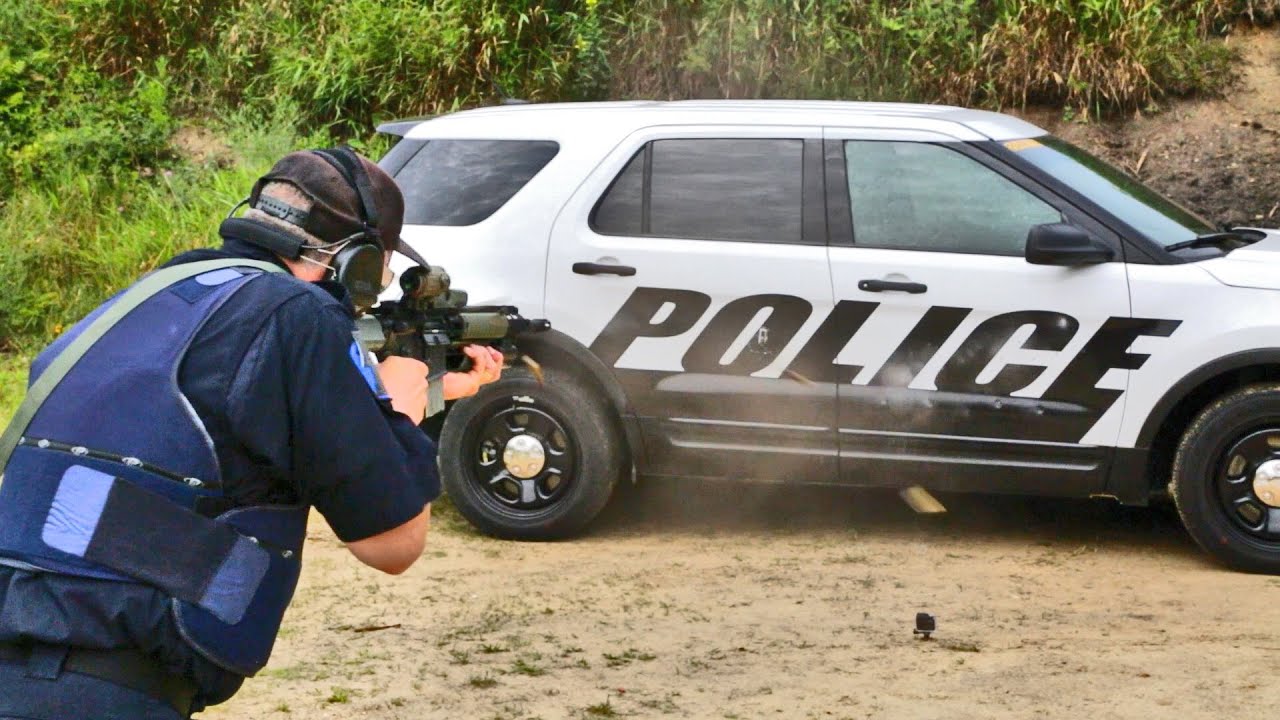Police Interceptor Ballistics Level III Testing. Ford announced it will offer ballistic panels on their Police Interceptor sedan and utility with protection from armor-piercing rifle ammunition.
The factory-equipped vehicles are the first pursuit-rated police vehicles in the United States to offer ballistic protection up to Department of Justice’s (DoJ) National Institute of Justice standard Type IV.
According to the Department of Justice standard, the description of a Type IV ballistic panel is:
“Type IV hard armor or plate inserts shall be tested in a conditioned state with .30 caliber armor piercing (AP) bullets (U.S. Military designation M2 AP) with a specified mass of 10.8 g (166 gr) and a velocity of 878 m/s ± 9.1 m/s (2880 ft/s ± 30 ft/s).”
While the number of shootouts between police and criminals using high-powered, armor-piercing rifle ammunition is low, they are unfortunately becoming more common.
The Type IV panels are an additional option above and beyond existing ballistic panel protection offered by Ford.
Optional Type III ballistic panels are already on duty in agencies around the United States and are rated to protect against all handgun and non-armor piercing bullets up to .30 caliber (specifically up to 7.62mm x 51mm NATO M80 ball ammunition) as well as special threat rounds identified by the Los Angeles Police Department.
The optional ballistic panels are in addition to a long list of existing features aimed at protecting officers, including Ford Police Interceptor safety cell construction to aid structural integrity.
In the event of a crash, advanced safety technology helps to absorb the energy of the collision and to direct the impact forces away from the occupants. Additionally, crumple zones are strategically placed in the frame or body of the vehicle, further absorbing and dissipating the energy of a crash to reduce intrusion into the occupant compartment.
Innovative materials – such as aluminum, advanced plastics and boron steel – also contribute to vehicle strength.
If you love cars you should subscribe now to official YouCar’s channel: http://urlz.fr/lEd
Go! It’s free!
All the Best









